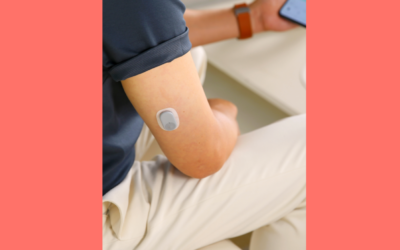By Dr. Noel O'Kelly on May 5, 2022
When we build and implement new digital services like virtual wards and remote monitoring into the NHS, co-design plays a key part in the creation process. By involving clinicians, carers, and patients during the service re-design, we can ensure the technology delivers a real, positive impact. But what does effective co-design look like?
What is co-design?
Co-design in digital health is bringing together all stakeholders to collaboratively develop new pathways and clinical services. This is key to ensuring the new service meets the needs of everyone involved and makes a positive difference to patients’ lives.
It is crucial that the design team have clear objectives for the new service – and agreement on what good looks like. Every person involved should see a benefit, from the commissioners to the clinicians and patients. If they cannot see how the new service will help them, they are far less likely to embrace the new technology.
Co-design involves scoping out the existing pathway and finding the pain points that need addressing in the re-design. It’s vital to look at the pathway as a whole. If you just look at one stage and shoehorn in the tech, you won’t know the impact it’s going to have up or downstream. Checking compatibility with other existing pathways is also important.
At its core, co-design is about listening. If we don’t take the time to hear opinions and address concerns, how can we expect all the stakeholders to engage? The design process is just as much about reassuring and engaging stakeholders, as it is about delivering great tech.
In a nutshell, co-design is about transparency, honesty, trust, mutual objectives, and having a shared vision. Everybody needs to be on the same page.

Who is involved?
All the people involved in the delivery of care should have a seat at the table. Frontline clinicians must be involved, to bring their experience, expertise and understanding of how the pathway currently works.
If possible, we recommend including patients to let them have their say on how the service is re-designed. The clinical team could create the best digital pathway that ever existed, but if the patients are not engaged and don’t see the benefits, they will resist using it.
Why is co-design important?
Without co-design, the new service is likely to fail. It’s why it’s such an important part in all of our partnerships. Great co-design from the beginning should result in fewer challenges and unexpected hurdles along the way, ensuring a more seamless route to launch.
The process of co-designing technology opens up better communication from the outset. It encourages everyone to share their ideas for improvements and to ask questions. These conversations also help manage expectations. Ensuring everyone is aware of the technology’s capabilities and their personal responsibilities helps to avoid any feelings of surprise and possible friction later.
As the design team identify pain points and gaps in the existing service, the brief becomes clearer. When we know exactly what’s not working and what needs changing, it becomes much easier to create pathways that will meet the health partner’s needs.

Another important element of co-design is contingency planning. By planning for things going wrong, the stakeholders can create robust safety nets and be better prepared to manage complications. Patient safety is paramount.
The most important reason for co-designing health technology is to engage with clinicians, carers and patients. By taking on board their fears, wants and ideas, we can create technology that will better meet their needs and have a positive impact. When everyone clearly sees the benefits of the solution and how it will make their lives easier, they are more likely to engage and embrace new digital models of care.
Our in-house clinicians and digital experts are on hand to co-design digital pathways and services, including virtual wards and remote patient monitoring across multiple conditions. Interested to hear how Noel and his team could help you? Get in touch now at digital@spirit-health.com.


